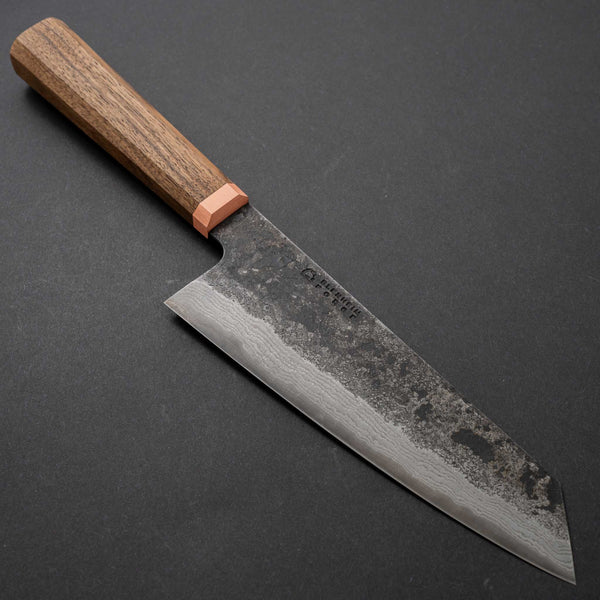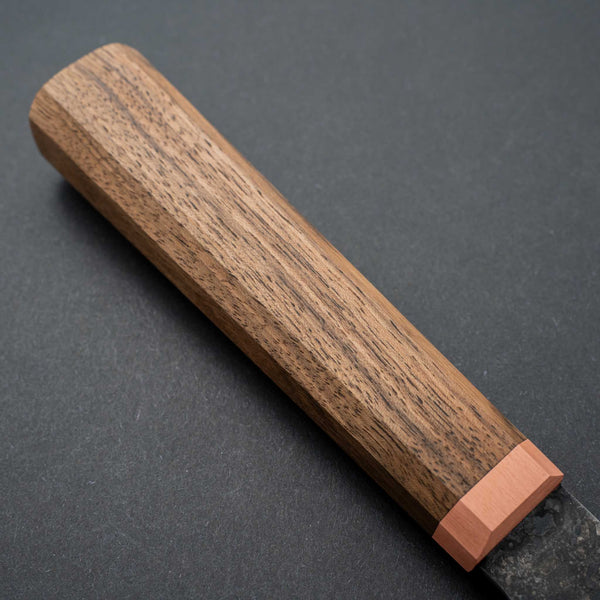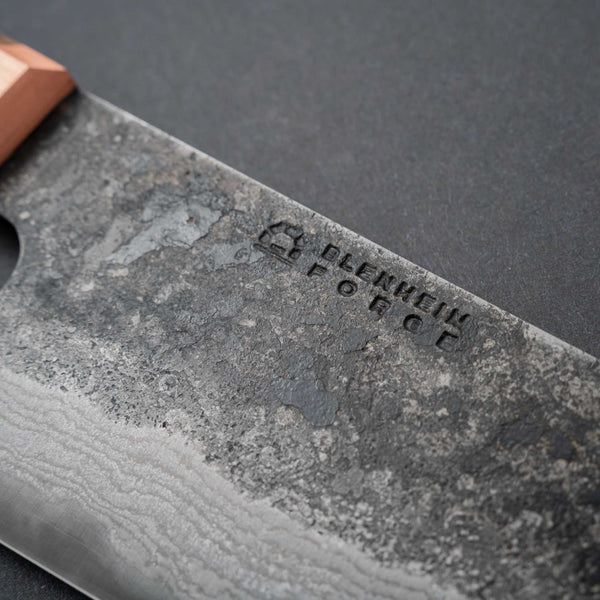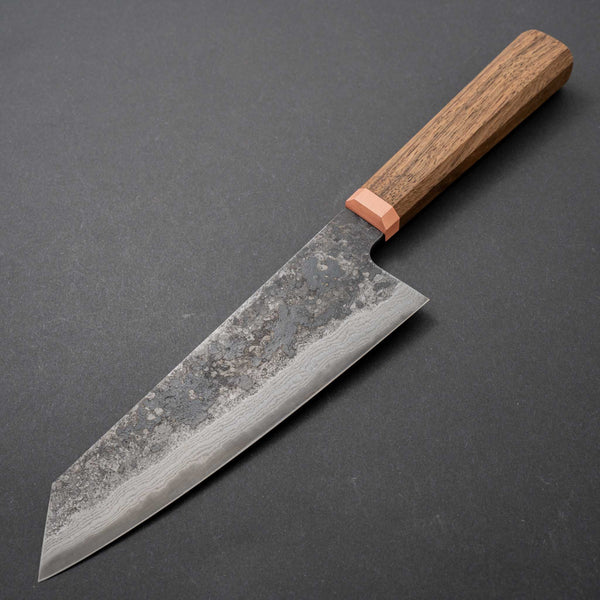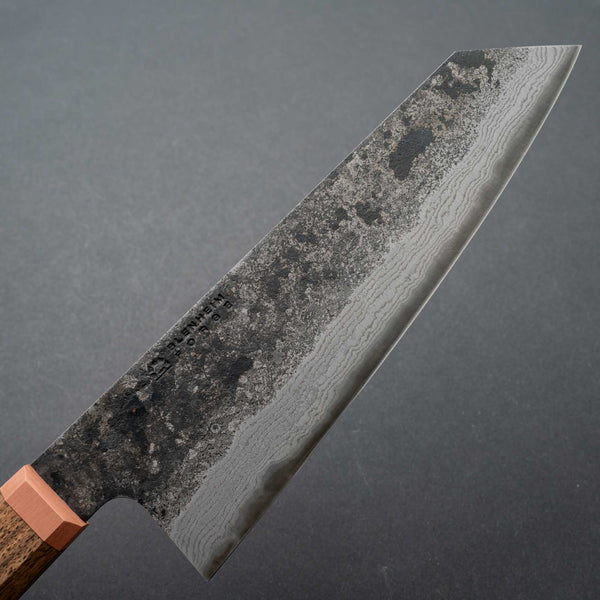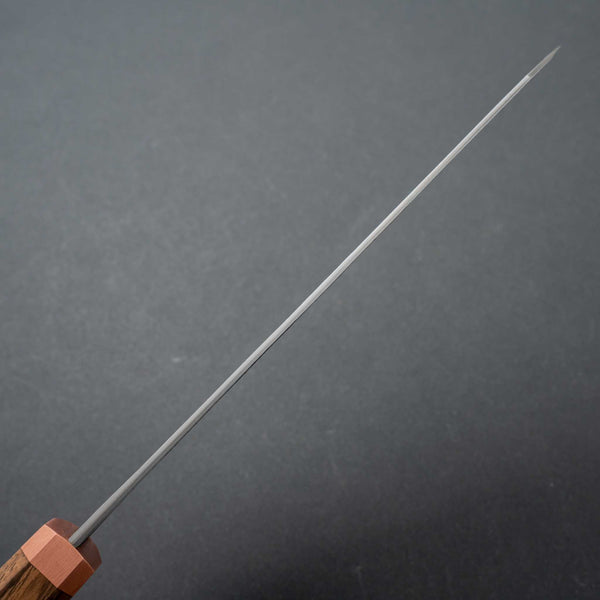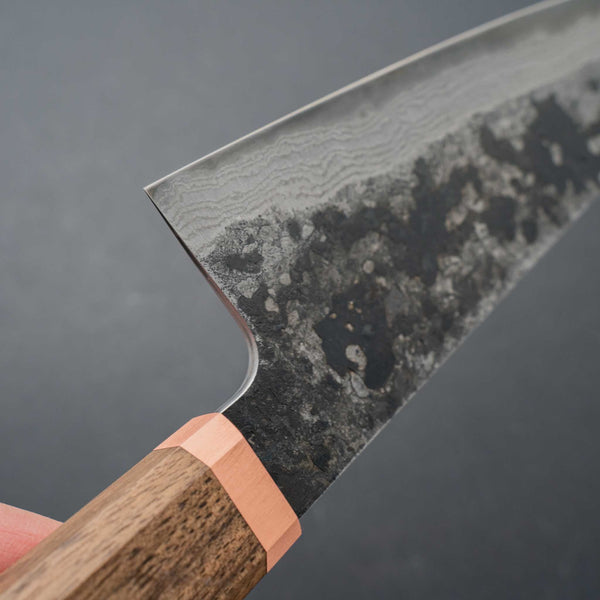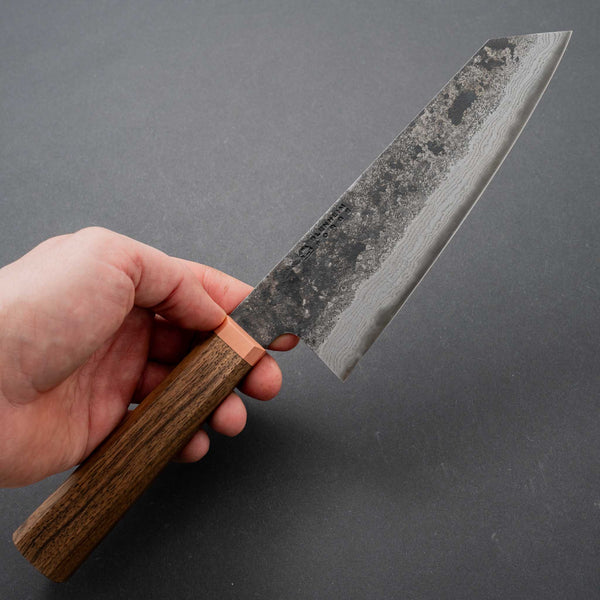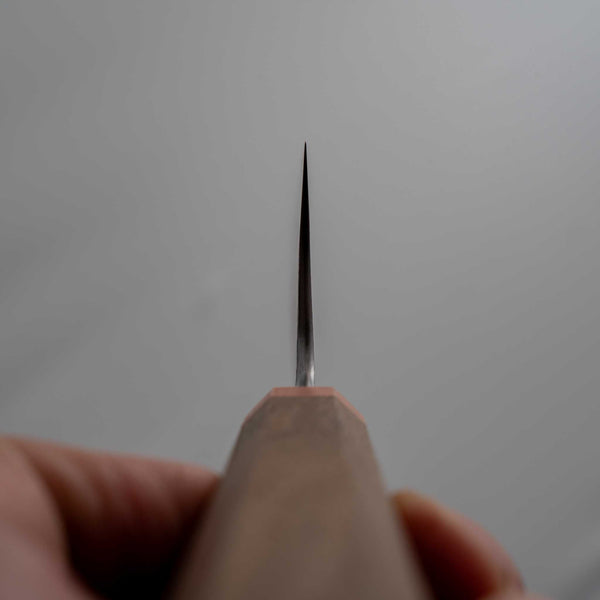Blenheim Classic Santoku 175mm
Out of stock
Blenheim Forge is a small workshop on the outskirts of London, where James, Jon and Rich make fantastic knives from scratch, right from the rough forging to the finished handle.
The knives have a raw and rustic look, but at the same time care is taken with the details with a rounded heel, thin tapered blades and elegant ends on the handle.
The knives come in two standard series "classic range" and "stainless clad". Both series are forged from Japanese carbon steel from Takefu Steel Mill in Echizen Japan.
Classic Range:
"Full carbon blade with damascus iron cladding and core of blue 2 (aogami 2). The series is characterized by super sharpness and by being easy to sharpen.
The stock is made of English walnut and ferrule of copper."
Stainless Clad:
"The blade is constructed with a stainless outer layer and a core of blue super (aogami super). A structure that gives the best of both worlds. The stainless outer layer makes maintenance easier and the hard core of Blue super, which isr easy to sharpen and provides a sharpness that lasts an awfully long time.
The stock is made of smoked English oak and brass ferrule."
Both series are not stainless, which is why extra care and attention must be expected and it is therefore recommended that the knife be washed and dried immediately after use.
The steel develops a patina over time, and the blade will take on a dull and darker appearance.
Like all knives, this one is not dishwasher safe.
The knives can be seen and tried in the store.
Specs
Brand: Blenheim Forge
Profile: Santoku
Size: 175mm
Steel Type: Carbon Steel
Steel: Blue (Aogami) #2, Carbon Damascus Clad
Handle: English Walnut & Copper Ferrule Octagonal
Total Length: 310mm
Blade Length: 175mm
Blade Height: 55mm
Thickness: 3mm to act
Handle Length: 130mm
Weight: 170g
Maintenance & Care
CARE AND MAINTENANCE:
NEVER PUT YOUR KNIVES IN THE DISHWASHER! That's it, and it applies to all knives. There are far too many chemical processes and changing heat effects for it to be good for anything made of steel. Most stock material cannot withstand it either.
You can roughly divide knives into two categories when we talk about care and maintenance; carbon knives (carbon knives) and stainless/semi stainless knives.
Carbon steel can be sharpened insanely sharp and holds an egg well (edge retention), but can rust and patina. Stainless steel has the advantage of being less prone to rust, but is not quite as sharp. Roughly speaking, because there are gradually many stainless "super steels" that have close to the same properties as carbon steel.
USE
Pay attention to how hard the knife is hardened. Be especially careful with knives of 60 hrc and above. Hard foods can "chip" the blade. Be careful with fruit stones, bones, shellfish, woody stems or very hard cheese. Frozen foods are a total no-go.
Your cutting board plays a big role. Use wood. Endwood is particularly good. Plastic can also be fine, but definitely not glass, granite or bamboo. Hinogi (cypress) is particularly good and otherwise there are from the very top shelf, rubber cutting boards with wooden handles.
Scraping the edge of the knife sideways will dull or damage your knife. Instead, use the back of the knife to move items across the cutting board. Do not twist the edge or pry the tip and for the record, your knife is NOT a screwdriver!
CLEANING
After use, wash the knife by hand with ordinary washing-up liquid, rinse with warm water and dry immediately. No dishwasher! Highly reactive steel, such as white #1, can be advantageously wiped off regularly during use. These types of steel can benefit from a little oil on the steel from time to time.
Wooden handles can dry out over time and exposure to water. Simply treat them with some food-safe mineral oil or beeswax. Can possibly lightly sanded with sandpaper before and after.
STORAGE
Take care of the egg, for your own sake and the sake of the knife. A saya (sheath) is optimal, but a simple blade cover will be fine if you store knives in a drawer or travel bag. Loosely lying in a drawer is a super bad solution.
A wall magnet made of wood is a great way to display your knives. Be sure to put it back on the spine first, then roll it on the surface of the blade. This will prevent the egg from making contact with the tree first. Steel knife magnets are a bad idea as they will scratch the blade of the knife.
Knife blocks are not optimal, neither for the egg nor for hygiene.
MAINTENANCE
All knives should be straightened before each use. This is best done on a leather strap. Steel irons are unsuitable for knives with a hardness of 59 and above. A ceramic version can be used here, but you have to be aware that it will grind and remove steel every time you use it. It is not appropriate if the egg simply needs to be "raised". We can help with leather straps and their use.
When the knife gradually becomes so dull that a definite sharpening is unavoidable, this is best done on a wet stone or a slow-moving sharpening machine. If you don't have the skills or the courage, drop it off with us and we'll take care of it.

